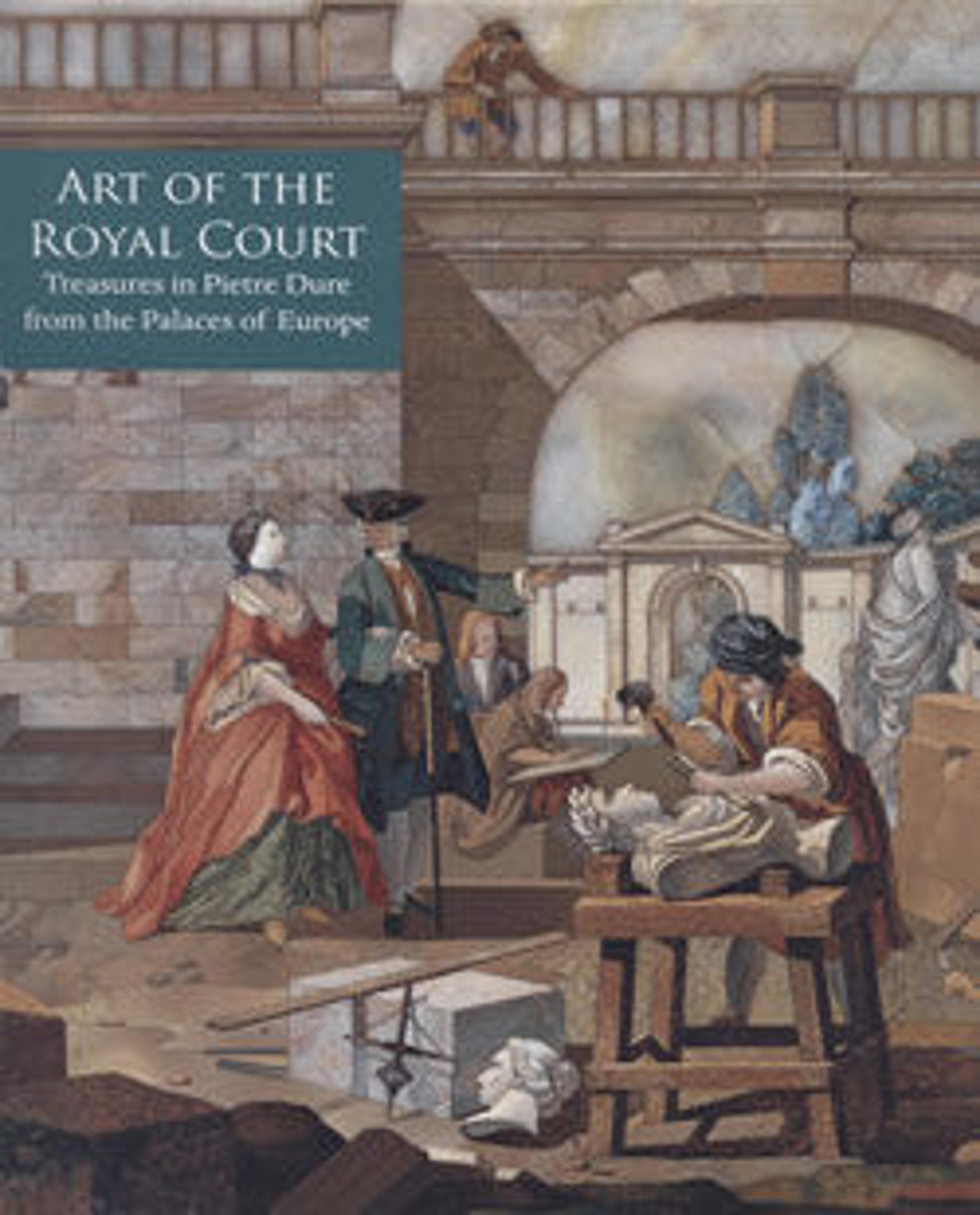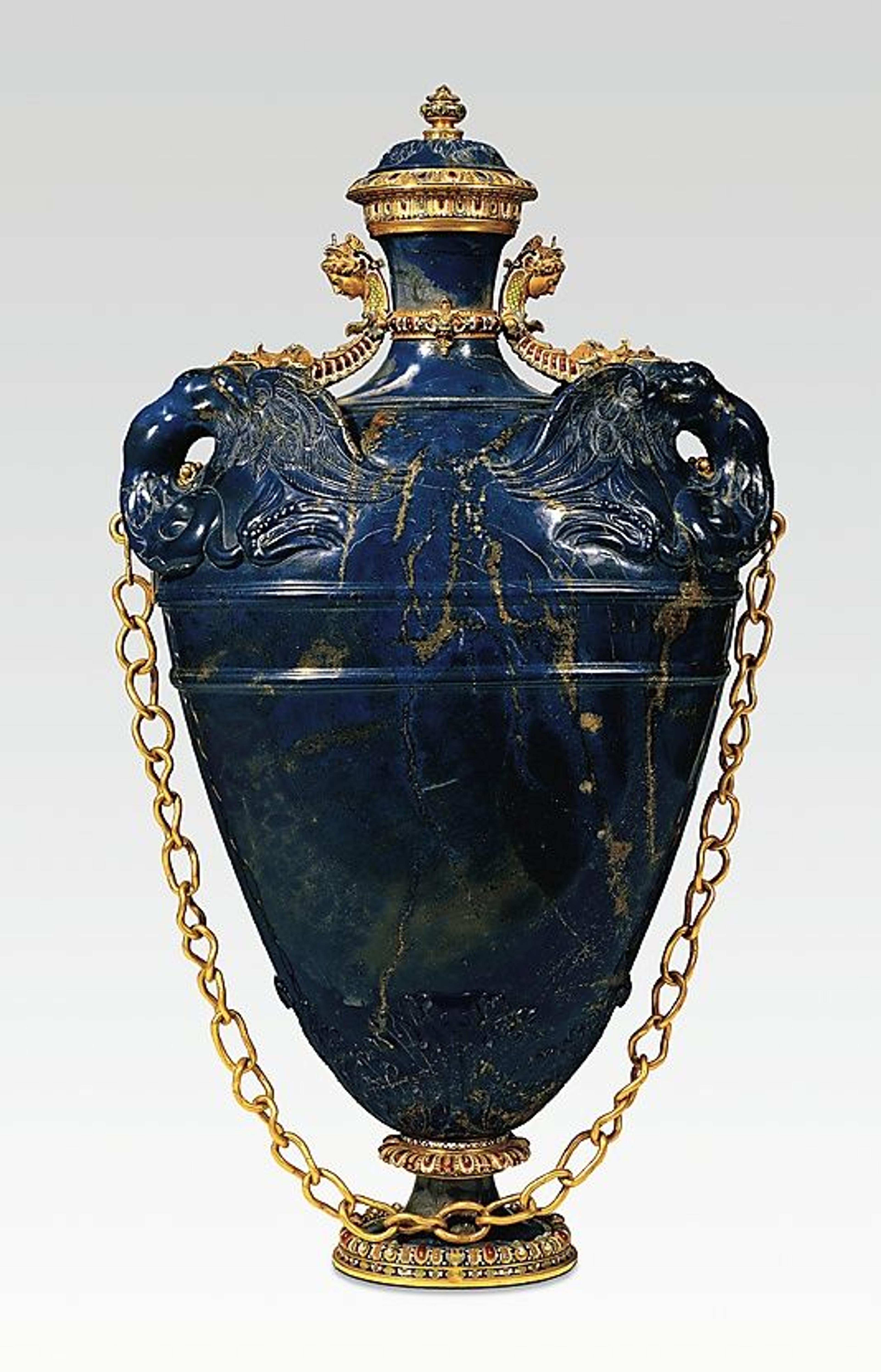
Art of the Royal Court: Treasures in Pietre Dure from the Palaces of Europe
In the royal and princely courts of Europe, artworks made of multicolored semiprecious stones were passionately coveted objects. Known as pietre dure, or hardstones, this type of artistic expression includes "paintings in stone"—presenting subjects such as landscapes, townscapes, flowers, birds, and decorative motifs—which were composed of intricately cut separate pieces and were made into magnificent tabletops, cabinets, and wall decorations. Other works are vessels and ornaments carved with virtuosic skill from a single piece of rare and brilliant lapis lazuli, chalcedony, jasper, or similarly prized substance; exquisite objects such as boxes, clocks, and jewelry that employed both the stonecutter's and the goldsmith's art; and portraits of nobles sculpted in variously colored stones. The medium was esteemed beyond most others: for example, Philip II of Spain paid 60 to 200 ducats for paintings by Titian but owned a table ornament of rock crystal valued at 500 ducats.
Derived from ancient Roman decorative stonework, the art of pietre dure was developed in Renaissance Florence, where the manufacture of such objects was enthusiastically sponsored by Medici princes. Ideally suited for ostentatious display, the works sent an unmistakable message of wealth and political might that was understood in center of power everywhere. From Italy the medium spread across Europe—to Prague, Madrid, Naples, Paris, and later Saint Petersburg.
Pietre dure had intellectual and spiritual appeal as well. Symbolic and mysterious meanings were ascribed to some stones. At the same time, in this age of exploration and dawning scientific inquiry, exotic shells, coral, petrified wood, ostrich eggs, and natural "wonders" or all sorts were avidly collected and displayed (in cabinets decorated with hardstones). Works in pietre dure—of natural substances but artfully crafted through human skill and imagination—were seen as a harmonious joining of nature and art.
Precious and fragile, pietre dure objects are rarely brought together in large numbers. The exceptional survey presented in this richly illustrated catalogue contains more than 150 masterworks from across Europe, dating from five centuries. They display almost every artistic use of semiprecious stone during this time and include some of the finest—even legendary—examples of the medium.
Eight essays by European and American experts describe the individualized development of pietre dure in every European region, present the latest developments in scholarship, point out interrelationships between art and dynastic politics and between cultures, and elucidate a variety of techniques by which the works were made.
Met Art in Publication
Citation
Koeppe, Wolfram, Annamaria Giusti, Rudolf Distelberger, Cristina Acidini Luchinat, and Metropolitan Museum of Art, eds. 2008. Art of the Royal Court: Treasures in Pietre Dure from the Palaces of Europe ; [in Conjunction with the Exhibition Art of the Royal Court: Treasures in Pietre Dure from the Palaces of Europe Held at The Metropolitan Museum of Art, New York, July 1 - September 21, 2008]. New York, NY: The Metropolitan Museum of Art.
